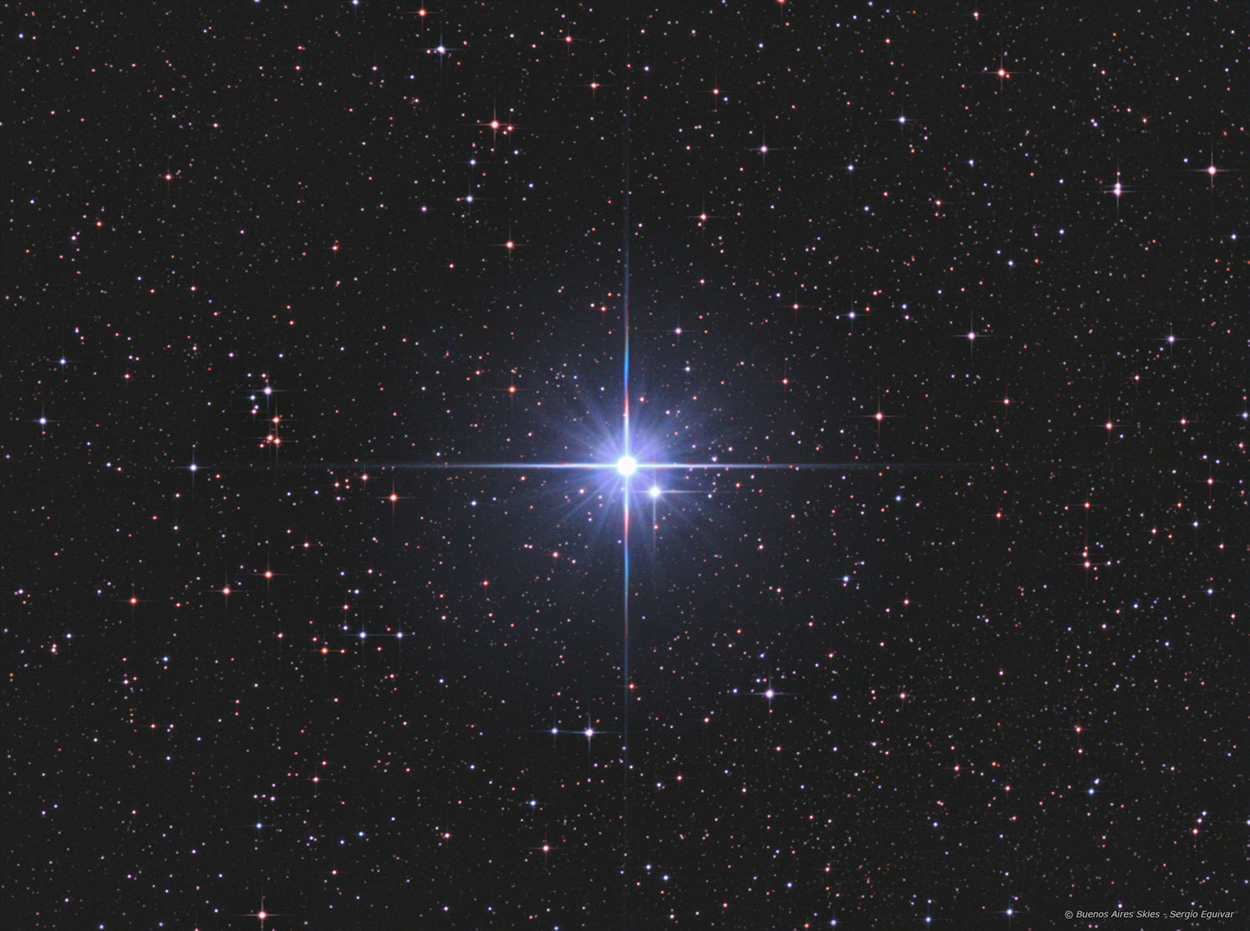
| HOME |
A CRUX
STAR (AKA ALFA CRUCIS)
(Image centered at: ra 12 h:67 m / dec - 63º 13')
CLICK THE IMAGE FOR A HIGH RESOLUTION VIEW
March 2023, Home Backyard in Martinez, Buenos Aires, Argentina
DATA
TYPE: Star
APPARENT DIAMETER: NA
APPARENT MAGNITUDE (V): 0.76
DISTANCE: 321 light years
IMAGE INFORMATION
INSTRUMENT: 6" ORION OPTICS UK (Ultra Grade Optics) w/Sky Watcher Coma Corrector (0.9x) working at at f4.5
CAMERA: QHY 183 MONO
MOUNT: SKY WATCHER NEQ6, OAG with Starlight Xpress Lodestar
FILTERS: Optolong LRGB Set
SKY CONDITIONS: urban skies - Bortle 8
EXPOSURES: LRGB (5,5,5,5)
i
OBJECT DESCRIPTION AND IMAGE SESSION
Acrux is the brightest star in the southern constellation of Crux. It has the Bayer designation α Crucis, which is Latinised to Alpha Crucis and abbreviated Alpha Cru or α Cru. With a combined visual magnitude of +0.76, it is the 13th-brightest star in the night sky. It is the most southerly star of the asterism known as the Southern Cross and is the southernmost first-magnitude star, 2.3 degrees more southerly than Alpha Centauri.
This system is located at a distance of 321 light-years from the Sun. To the naked eye Acrux appears as a single star, but it is actually a multiple star system containing six components. Through optical telescopes, Acrux appears as a triple star, whose two brightest components are visually separated by about 4 arc seconds and are known as Acrux A and Acrux B. Both components are B-type stars, and are many times more massive and luminous than the Sun.
HR 4729, also known as Acrux C, is a more distant companion visible in the image at the lower right. It has a magnitude of 4.81 and is separated by 1degree and a half.
This is the first light of the QHY 183 Mono camera. It is a high resolution camera suitable for shorter focal length telescopes. The camera has very small pixels and consequently low full well capacity.